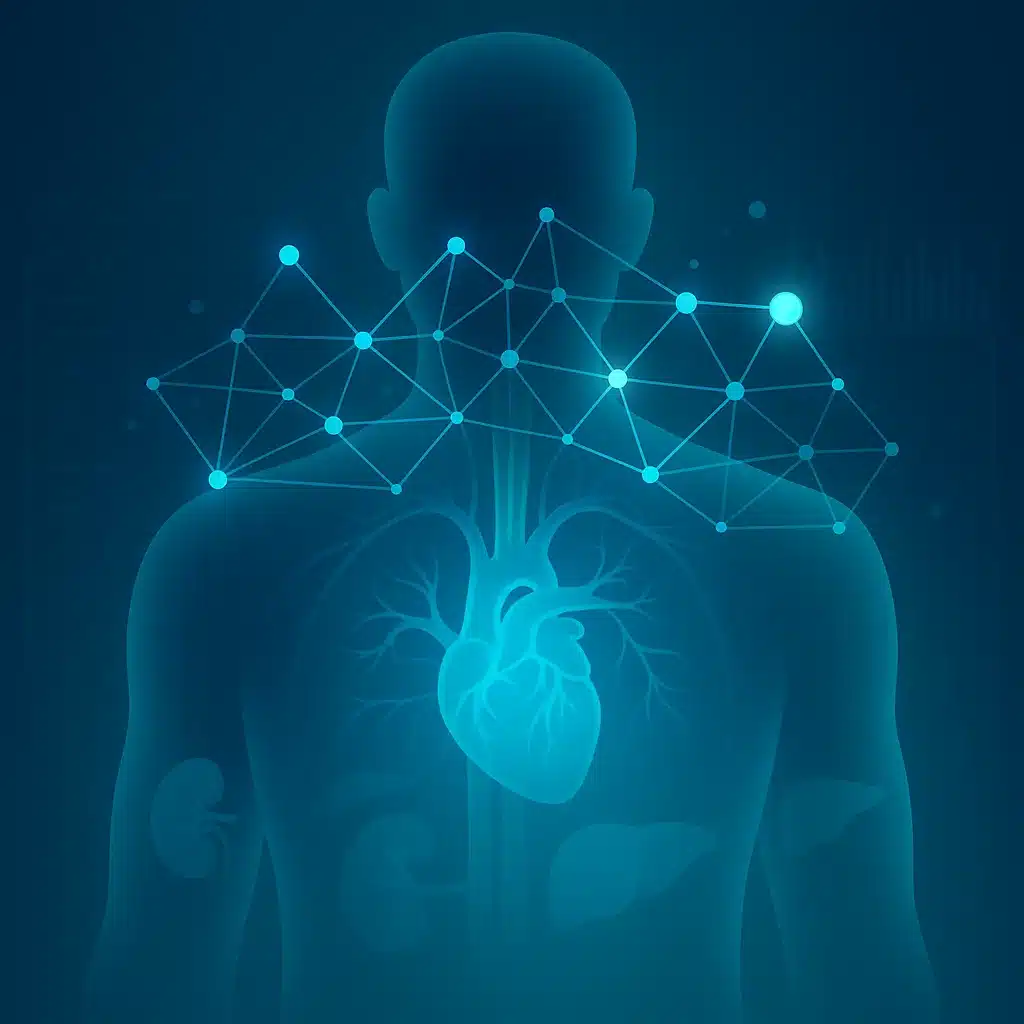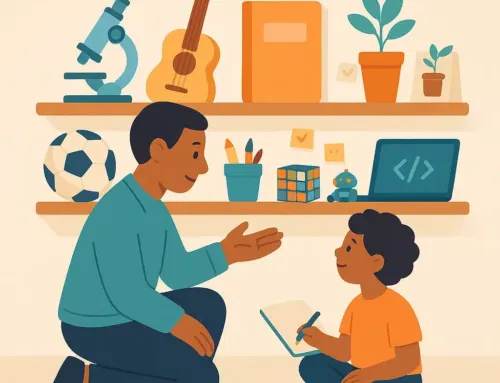
Approx. read time: 7.7 min.
Post: 7 Eye-Opening Advances in AI in organ transplants
Artificial Intelligence AI in organ transplants
🔍 Smarter Donor-Recipient Matching
The old way: Matching historically balanced blood type, HLA, size, urgency, and distance—useful, but limited. The U.S. transplant system is now moving toward “continuous distribution,” a points-based framework that weighs medical urgency, biology, equity, and placement efficiency more holistically (kidney, heart, and other organs will use it).
What AI adds: Machine-learning models can integrate thousands of variables—genomics, prior graft history, comorbidities, social determinants, and real-time labs—to produce a match score that forecasts short- and long-term outcomes, not just compatibility. Recent analyses show ML models can rival or exceed traditional rules for liver allocation/prognosis, which historically leaned on MELD; multiple reviews and studies report ML improving risk discrimination and waitlist mortality prediction beyond classic scores in certain settings (caveat: generalizability varies).
System modernization: HRSA’s OPTN Modernization Initiative (since March 2023) is overhauling governance, tech, and transparency, opening the door for advanced analytics—exactly where AI-assisted triage and decision support fit.
Why it matters: Better match scoring reduces non-use (discard) of borderline organs and improves survival by getting the right organ to the right patient sooner (organ allocation). (In kidneys, discard has historically hovered near ~18–20% in the U.S., a major pain point AI can help address.)
🧪 Predicting Rejection & Personalizing Drugs
From reactive to predictive: Rejection can be “silent” until it’s advanced. ML models trained on thousands of transplant records flag early risk through patterns in immune markers, kidney/hepatic function, and other signals. Reviews show ML can outperform static thresholds for short-term risk in relevant liver disease and transplant contexts, pushing care from reactive to proactive.
Donor-derived cell-free DNA & omics: Combining lab-based biomarkers (e.g., dd-cfDNA), proteomics, and transcriptomics with ML further sharpens detection—allowing earlier biopsies or therapy tweaks while avoiding unnecessary procedures. (Clinical programs increasingly pair biomarkers with risk models; exact performance varies by organ and center—an active research area.)
Drug dosing, finally personal: AI helps personalize immunosuppression—especially tacrolimus—by predicting dose–concentration relationships using age, weight, genotype, liver/kidney function, co-meds, and time post-op. Multiple studies demonstrate improved tacrolimus prediction and time-in-therapeutic-range with ML compared with standard nomograms, pointing toward safer, more stable troughs and fewer rejection/infection seesaws.
🐖 Xenotransplantation: From Pigs to People
What changed: In March 2024, Massachusetts General Hospital (MGB) performed the world’s first gene-edited pig kidney transplant in a living recipient; the center has since performed additional procedures and is moving into FDA-approved clinical trials. These kidneys incorporate dozens of edits to reduce immune attack and improve compatibility (e.g., removing key pig antigens and adding human genes).
Virus safety matters: A long-standing barrier was the risk of porcine endogenous retroviruses (PERVs). Landmark work in 2017 showed CRISPR can inactivate all PERV copies in pig cells and enable PERV-inactivated pigs—foundational for safer xenotransplantation.
Where AI fits: (ai tools)
-
Target selection & edit design: AI accelerates discovery of which pig genes to knock out and which human genes to add to blunt hyperacute rejection and coagulation issues.
-
Infection modeling: AI scans pig genomes to detect latent viruses and simulates cross-species risk scenarios so teams can design better safeguards.
-
Peri-op risk scoring: Centers deploy analytics to forecast rejection, thrombosis, and dosing intensity in the first days and weeks post-op, when risks are highest. (MGB and others publicly describe multi-disciplinary monitoring frameworks around these first-in-human cases.)
Beyond kidneys: There have been research-only heart and lung xenotransplants under tightly controlled protocols (e.g., a genetically modified pig lung supported a brain-dead recipient for nine days), underscoring rapid—yet cautious—progress.
🧊 Organ Preservation & Viability Scoring – organ donation and transplantation
The bottleneck: Once procured, organ viability clocks start ticking—hearts/lungs ~4–6 hours, livers ~12, kidneys ~24. Perfusion machines now keep organs “alive” with oxygenated, nutrient-rich fluid at body-like temperatures (normothermic machine perfusion, NMP).
AI-enhanced perfusion: ML models ingest perfusion data (flows, pressures, lactate, bile output, enzyme trends) to classify viability and detect injury earlier than humans can. Trials and real-world studies show NMP can recondition marginal livers, with excellent multi-year outcomes when livers are accepted after machine testing.
Record-setting preservation: Teams have kept human livers functioning ex vivo for 3–7 days and reproducibly beyond 120–180 hours in research settings, creating windows for repair and deeper testing—exactly where AI-driven control loops and prediction shine.
🛫 Artificial Intelligence AI for Logistics & Organ Routing
Smarter routing, fewer cold-ischemia hours: As allocation shifts to continuous distribution nationwide, logistics complexity grows. AI can propose optimal transport chains (flights, ground legs, team readiness) to cut cold-time and reduce last-minute declines. OPTN and HRSA’s modernization efforts explicitly emphasize data transparency and reducing non-use, which go hand-in-hand with algorithmic routing and acceptance prediction.
🛠️ Surgical Training, Guidance & Robotics
Train more, risk less: VR platforms (e.g., Osso VR, Touch Surgery) with AI-assisted feedback measurably improve surgical performance in validation studies. While transplant modules are specialized, the broader effect—higher readiness for rare, high-stakes steps—is clear.
In the OR: Computer vision can label vessels, track instruments, and warn of bleeding risks in real time. Robotic systems execute micro-movements with tremor filtering; pairing them with AI image analysis supports safer anastomoses and shorter warm-ischemia windows.
📈 Equity, Bias & Fairer Allocation
The challenge: Any algorithm can encode bias if trained on biased data. That’s why fairness-constrained learning is crucial. New approaches (e.g., FERI multitask learning) maintain predictive power while reducing disparities across gender, age, and race—an explicit research priority in transplant informatics.
Policy alignment: OPTN’s shift to continuous distribution explicitly weighs patient access alongside medical urgency and biology, offering a better canvas for fair-by-design algorithms.
🧫 3D Bioprinting & Lab-Grown Organs
Design loops with AI: From scaffold geometry to cell-mix flow, AI helps simulate perfusion, diffusion, and mechanical stress before a single bio-ink droplet is printed—accelerating iteration and reducing failure. Reviews outline how ML guides materials, nozzle parameters, and structural optimization for functional tissues.
📊 Surprising, Data-Driven Facts
-
Kidney waste is real: Nearly one in five U.S. kidneys were historically discarded, often due to quality uncertainty. ML triage plus NMP is helping reclassify viable organs and cut waste.
-
Beyond MELD: Multiple studies suggest ML can match or outperform MELD for some tasks (e.g., waitlist mortality prediction or post-LT risk), but external validation across centers remains key.
-
“Repair” outside the body: Ex vivo perfusion has reconditioned damaged livers with excellent 5-year outcomes when selected by machine-based viability criteria.
-
Tighter drug control: AI-guided tacrolimus dosing improves prediction of troughs and time-in-range—critical for preventing both rejection and infection.
-
Trials are here: FDA-approved xenotransplantation kidney trials are launching, reflecting confidence in gene-editing and monitoring frameworks.
✅ Risks, Limits & What to Watch
-
Generalizability: Models trained at one center can underperform elsewhere; multicenter validation is mandatory.
-
Shift in incentives: Prediction that increases organ acceptance must be paired with quality safeguards—HRSA/OPTN modernization tracks these metrics.
-
Security & privacy: Genomic and continuous monitoring data demand robust governance (de-identification, audit logs, role-based access).
-
Transparent algorithms: Clinicians need interpretable risk drivers (e.g., SHAP) and continuous post-deployment monitoring (“model M&M”).
❓ FAQs – AI in organ transplants
1) What is the biggest immediate win from AI in organ transplants?
Better donor-recipient matching and earlier rejection prediction, which together reduce non-use and complications.
2) Does AI replace doctors in allocation decisions?
No—AI is decision support, not decision maker. OPTN policy and clinical judgment still decide offers and acceptance.
3) Are AI-guided xenotransplants safe from pig viruses?
Risk isn’t zero, but PERV inactivation via CRISPR substantially reduces cross-species viral concerns; trials include intensive monitoring.
4) Can AI really extend how long organs last outside the body?
Indirectly, yes. AI helps control perfusion and score viability on NMP, which supports longer preservation windows and reconditioning.
5) What about fairness and bias?
Fairness-aware training (e.g., FERI) reduces subgroup disparities without sacrificing accuracy—crucial as allocation modernizes.
6) Does AI outperform MELD for the liver?
In some tasks, yes—but results vary across centers and datasets; MELD 3.0 remains a strong baseline for access equity.
7) Will AI mean fewer biopsies?
Potentially. Earlier non-invasive signals (labs + ML, sometimes wearables) can triage who needs a biopsy sooner. Evidence is growing but organ-specific.
8) Is this only U.S.-relevant?
No. AI methods generalize, but policy, datasets, and resources differ by country—so validation matters.
Final Word
AI in organ transplants is shifting the field from limited, rules-based decisions to data-rich, predictive, and fair care—improving matches, reducing rejection, and opening the door to safe xenotransplantation. With HRSA/OPTN modernization, AI-assisted logistics, and perfusion-based organ “repair,” we’re moving toward a system where more organs are used, more patients thrive, and fewer lives are left waiting.
🧭 Sources & References – AI in organ transplants
-
HRSA/OPTN Modernization & Allocation (policy/overview)
-
Kidney discard rates & quality uncertainty.
-
ML vs. traditional scores for liver outcomes (reviews & studies).
-
Xenotransplantation milestones (MGB kidneys).
-
PERV inactivation via CRISPR.
-
Extended ex vivo perfusion & viability.
Related Videos:
Related Posts:
Happy Being Unhappy 15 Ways It Quietly Ruins Growth
The Emotional Divide Between Genders and Its Daily Cost
Understanding Immature Conflict Behavior and How to Stop It
Cannabinoid Hyperemesis Syndrome – 7 Key Insights on Dealing
Mothers bond with adult children – 12 Truths for Lasting Trust









